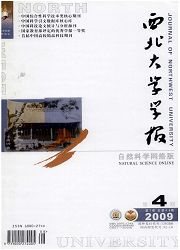

 中文摘要:
中文摘要:
目的探讨云南民乐地区晚三叠世玄武岩和安山岩组合的成因机制。方法对岩体进行详细的野外地质、岩相学及全岩地球化学分析。结果该套火山岩具有高K,Th,U,La等大离子亲石元素含量,以及Ta,Nb显著亏损的地球化学特征,其La/Nb,Nb/Th,Ta/,Yb,Th/Yb,La/Yb,Ti/Zr和Ti/Y等不活动微量元素比值均指示其形成于活动大陆边缘弧环境。结论这套陆缘弧中-基性火山岩应该是保山地块与昌都-思茅地块发生碰撞后,在陆内环境形成的的滞后型弧火山岩。
 英文摘要:
英文摘要:
Aim To explore the formation mechanism of Late-Triassic volcanic rocks in the Minle area, Yunnan Province. Methods Field observation, petrographical description and geochemical analysis on the whole rocks was used. Results The basalts and sites exhibit the typical geochemical features of island arc rocks : i. e. , enriched in K,Th,U,La and other lithophile elements, remarkable depletion of Nb and Ta. Also, the La/Nb,Nb/Th,Ta/Yb, Th/Yb, La/Yb,Ti/Zr and Ti/Y ratios of the Minle volcanic rocks indicate that they may formed in a active continental marginal arc setting. Conclusion It can be concluded that these intermediate and basic volcanic rocks was a delayed type formed in a intra-continent setting after the collisional orogeny between the Baoshan block and the Changdu-Simao block.
 同期刊论文项目
同期刊论文项目
 同项目期刊论文
同项目期刊论文
 Magma mixing origin for the post-collisional adakitic monzogranite of the Triassic Yangba pluton, No
Magma mixing origin for the post-collisional adakitic monzogranite of the Triassic Yangba pluton, No Geochemical evidence for origin of magma mixing for the Triassic monzonitic granite and its enclaves
Geochemical evidence for origin of magma mixing for the Triassic monzonitic granite and its enclaves 期刊信息
期刊信息
